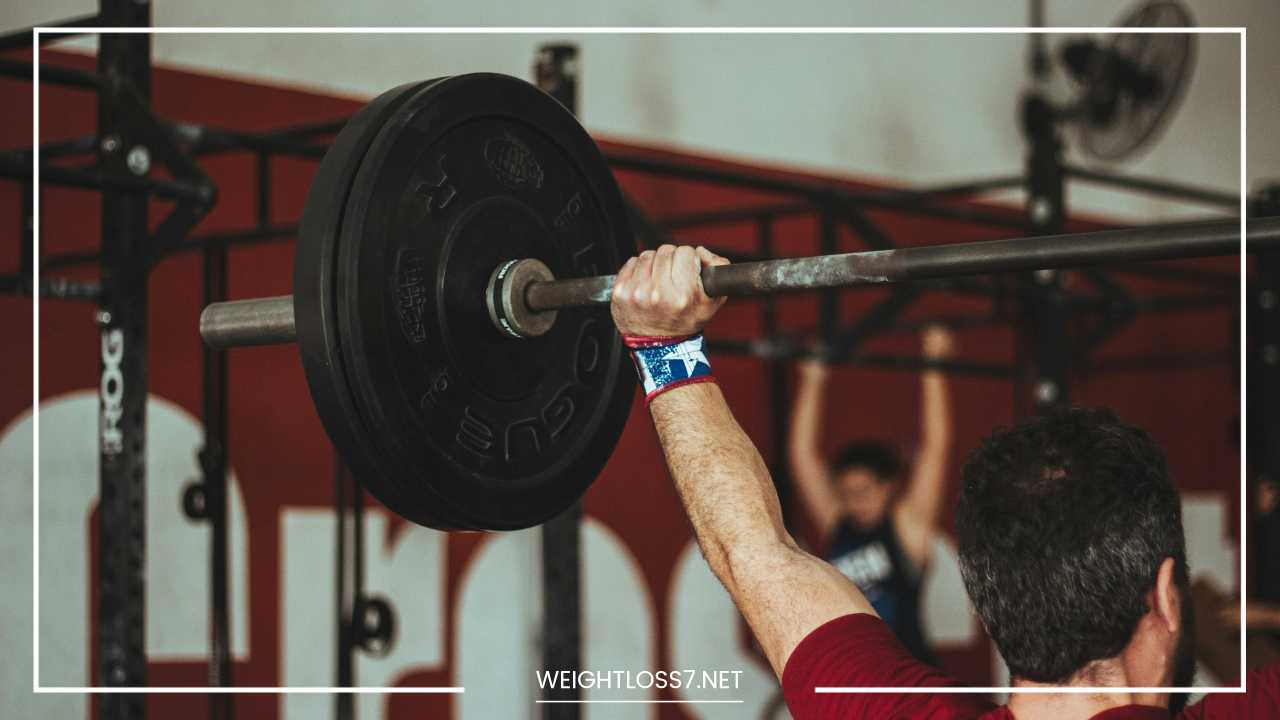Losing Weight Facts: Separating Myth from Marathon

Losing Weight Facts
Losing Weight Facts: Separating Myth from Marathon
The quest for a slimmer physique can feel like navigating a labyrinth of conflicting advice, fad diets, and frustrating plateaus. Discouragement is a natural enemy on this journey, but before you throw in the towel, let’s arm ourselves with knowledge!
This comprehensive guide delves into the science behind weight loss, debunking common myths and highlighting effective strategies for lasting success.
Fact #1: Calories Still Count, But Context Matters
While the basic principle of calories in vs. calories out remains true, it’s not the whole story. Understanding the quality of calories you consume plays a crucial role. A 500-calorie donut isn’t the same as 500 calories from a balanced meal with lean protein, complex carbohydrates, and healthy fats.
Here’s why:
- Macronutrient composition: The ratio of carbohydrates, protein, and fat in your diet significantly impacts how your body processes calories. Protein and fiber, for example, promote satiety and regulate blood sugar, leading to more stable energy levels and reduced cravings.
- Glycemic Index: This index assigns a value to foods based on their impact on blood sugar. Low-glycemic index foods release glucose slowly, preventing blood sugar spikes and crashes that can trigger cravings. Fruits, vegetables, and whole grains tend to have lower glycemic indexes compared to refined carbohydrates like white bread and sugary drinks.
- Thermic Effect of Food (TEF): Digesting and absorbing food burns calories. Protein has a higher TEF compared to carbohydrates and fats, meaning your body expends more energy processing it.
Fact #2: Crash Diets Don’t Last, and They Can Backfire
Severe calorie restriction might lead to rapid weight loss initially, but it’s a recipe for disaster in the long run. Here’s why:
- Starvation Mode Myth: While the body does adapt to reduced calorie intake, the term “starvation mode” is a misnomer. Metabolism does slow down to conserve energy, but not to a significant degree that completely halts weight loss.
- Muscle Loss: When the body doesn’t have enough readily available calories, it breaks down muscle tissue for fuel. Muscle is metabolically active, meaning it burns calories at rest. Losing muscle mass slows down your metabolism, making it harder to lose weight and maintain it in the long term.
- Nutrient Deficiencies: Crash diets often lack essential vitamins and minerals, leading to fatigue, hair loss, and other health problems.
- Yo-Yo Effect: The inevitable weight regain after a crash diet can be demoralizing. The body, deprived for so long, tends to rebound and store even more fat in anticipation of future restrictions.
Fact #3: Protein is Your Weight Loss Ally, But Choose Wisely
Protein keeps you feeling fuller for longer, reducing cravings and aiding portion control. It also helps build and maintain muscle mass, which boosts metabolism and burns more calories at rest. However, not all protein sources are created equal.
- Lean Protein Sources: Focus on lean protein sources like chicken, fish, beans, lentils, and low-fat dairy products. These options are lower in saturated fat and cholesterol compared to red meat and processed meats.
- Plant-Based Protein: Don’t forget plant-based protein sources like tofu, tempeh, legumes, and nuts. These options can be a great way to add variety to your diet and boost fiber intake.
Fact #4: Fiber is Your Friend, But Go Beyond Just Roughage
Fiber is another dietary hero for weight loss. Here’s how it works:
- Slows Digestion: Fiber adds bulk to your food, taking longer to digest and keeping you feeling satisfied for longer. This helps prevent overeating and snacking.
- Regulates Blood Sugar: Fiber helps regulate blood sugar levels by slowing down the absorption of carbohydrates. This prevents blood sugar spikes and crashes that can trigger cravings.
- Gut Health: Fiber plays a crucial role in gut health, which is linked to overall well-being and weight management. A balanced gut microbiome can improve digestion, nutrient absorption, and metabolism.
However, not all fiber is created equal:
- Soluble Fiber: This type of fiber forms a gel-like substance in your digestive tract, further promoting satiety and regulating blood sugar. Sources include oats, beans, and apples.
- Insoluble Fiber: This type of fiber adds bulk to your stool and promotes regularity. It doesn’t necessarily contribute to satiety, but it’s still important for gut health. Sources include whole grains and leafy green vegetables.
A balanced intake of both soluble and insoluble fiber is ideal for weight loss and overall health.
Fact #5: Don’t Fear Healthy Fats, Embrace Them for Long-Term Success
Healthy fats, unlike their saturated and trans fat counterparts, are essential for a weight loss plan that’s both effective and sustainable. Here’s why:
- Satiety and Hormone Regulation: Healthy fats promote satiety by stimulating the release of hormones like cholecystokinin (CCK) that signal fullness. This helps you feel satisfied after meals and reduces cravings throughout the day.
- Nutrient Absorption: Certain vitamins, like vitamins A, D, E, and K, are fat-soluble, meaning they require fat for proper absorption. Including healthy fats in your diet ensures you’re reaping the full benefits of these essential nutrients.
- Inflammation Management: Chronic inflammation is linked to various health issues, including obesity. Healthy fats, particularly omega-3 fatty acids, have anti-inflammatory properties that can help regulate weight and improve overall health.
Choosing the Right Fats:
- Monounsaturated Fats: These fats are liquid at room temperature and are found in avocados, olive oil, nuts (almonds, peanuts, cashews), and seeds (flaxseeds, chia seeds). They have been linked to improved heart health and blood sugar control.
- Polyunsaturated Fats: These fats also exist in liquid form at room temperature and come in two main types: omega-3 and omega-6. Omega-3s, found in fatty fish (salmon, tuna, mackerel), walnuts, and flaxseeds, are particularly beneficial for heart health and inflammation reduction. Omega-6s are abundant in vegetable oils (sunflower, soybean, corn) and nuts (walnuts, sunflower seeds). While essential, it’s important to maintain a balanced intake of omega-3 and omega-6 fats, as an excess of omega-6s can promote inflammation.
Fact #6: Sleep is a Weight Loss Weapon, Don’t Skimp on Shut-Eye
When sleep-deprived, your body produces more ghrelin (the hunger hormone) and less leptin (the satiety hormone). This hormonal imbalance leads to increased cravings and a higher likelihood of overeating. Here’s how sleep impacts weight loss:
- Appetite Regulation: Sleep deprivation disrupts the production of leptin and ghrelin, making you feel hungrier and less satisfied after meals.
- Metabolic Function: During sleep, your body repairs tissues, regulates hormones, and optimizes metabolic processes. Insufficient sleep can impair these functions, leading to weight gain.
- Stress Management: Sleep deprivation increases stress hormones like cortisol, which can trigger cravings for sugary and high-fat foods. Getting enough sleep helps manage stress levels and promotes healthier food choices.
Aim for 7-8 hours of quality sleep each night to create a sleep environment conducive to restful sleep:
- Create a relaxing bedtime routine.
- Establish a consistent sleep schedule, even on weekends.
- Make your bedroom cool, dark, and quiet.
- Limit screen time before bed.
- Avoid caffeine and alcohol close to bedtime.
Fact #7: Exercise is Key, But It’s a Two-Horse Race: Cardio and Strength Training
Exercise is undeniably crucial for weight loss and overall health. However, the type of exercise you choose plays a significant role. Here’s why both cardio and strength training are essential:
- Cardio Burns Calories: Cardiovascular exercise like brisk walking, running, swimming, or cycling is excellent for burning calories during your workout. Aim for at least 150 minutes of moderate-intensity cardio or 75 minutes of vigorous-intensity cardio per week.
- Strength Training Builds Muscle: Strength training exercises like weightlifting, bodyweight exercises, or resistance bands help build and maintain muscle mass. Muscle is metabolically active, meaning it burns calories even at rest. This can significantly boost your metabolism and aid in weight loss.
The Ideal Exercise Combination: Aim to incorporate a combination of both cardio and strength training into your weekly routine. This can involve alternating cardio and strength training days or combining them in a single workout.
Fact #8: It’s a Marathon, Not a Sprint: Embrace Long-Term Lifestyle Changes
Sustainable weight loss is a journey, not a quick fix. Here’s why focusing on long-term lifestyle changes is key:
- Habit Formation: Crash diets and restrictive plans are often temporary solutions. By incorporating gradual, healthy changes into your lifestyle, you’re more likely to stick with them in the long run.
- Mindset Shift: View weight loss as a journey towards a healthier, happier you, not just a number on the scale. Celebrate non-scale victories like increased energy levels, improved mood, and better sleep. This positive mindset will fuel your motivation for long-term success.
Fact #9: Water is Your Weight Loss Buddy, Don’t Forget to Hydrate!
Water plays a vital role in various bodily functions, including digestion, nutrient absorption, and temperature regulation. It also plays a surprising role in weight loss:
- Appetite Suppression: Sometimes, thirst can be mistaken for hunger. Drinking plenty of water can help curb cravings and prevent unnecessary calorie intake. Studies suggest that drinking water before a meal can promote feelings of fullness and lead to eating less.
- Improved Metabolism: Proper hydration ensures your body functions optimally, including metabolic processes. Dehydration can slightly slow down metabolism, making it harder to burn calories.
- Increased Exercise Performance: Staying hydrated during exercise is crucial for optimal performance and endurance. Dehydration can lead to fatigue, decreased motivation, and hinder your workout effectiveness.
How Much Water Should You Drink?
There’s no one-size-fits-all answer, but a general guideline is to aim for eight glasses (around 2 liters) of water daily. Individual needs may vary depending on factors like body size, activity level, and climate. Here are some tips to stay hydrated:
- Carry a reusable water bottle: This makes it convenient to sip on water throughout the day.
- Set reminders: Use phone alarms or apps to remind yourself to drink water at regular intervals.
- Flavor it up: Add slices of cucumber, lemon, or berries to your water for a refreshing twist.
- Choose water over sugary drinks: Sugary beverages are loaded with empty calories and can contribute to weight gain. Opt for water over sodas, juices, and sweetened coffees/teas.
Fact #10: Mindful Eating Matters: Savor the Journey, Not Just the Destination
Distracted eating often leads to overeating. Mindful eating practices can help you develop a healthier relationship with food and promote weight loss success:
- Focus on the Present Moment: Pay attention to the sights, smells, textures, and tastes of your food. Put down your phone, turn off the TV, and avoid distractions while eating.
- Eat Slowly and Savor Each Bite: Chewing your food thoroughly allows your body to register satiety signals from hormones like leptin. This can prevent you from overeating before feeling satisfied.
- Stop When You’re Comfortably Full, Not Stuffed: Listen to your body’s hunger and fullness cues. Aim to stop eating when you’re comfortably full, not overly stuffed.
- Enjoy the Experience: Eating should be a pleasurable experience, not a chore. Take the time to appreciate your food and savor the act of eating.
Fact #11: Portion Control is Your Ally, Not Your Enemy
Portion control is a crucial aspect of weight management. Here’s why:
- Managing Calorie Intake: By controlling portion sizes, you can manage your overall calorie intake and create a calorie deficit for weight loss.
- Mindful Eating: Practicing portion control naturally encourages mindful eating habits. You’re more likely to pay attention to hunger and fullness cues when you’re aware of how much you’re consuming.
Tips for Portion Control:
- Use smaller plates: Studies suggest that people tend to eat more food when presented with larger plates.
- Measure or pre-portion food: Measure out portions or prepare individual servings to avoid overeating at mealtimes.
- Read food labels: Pay attention to serving sizes listed on food labels to avoid consuming more calories than intended.
- Mindful snacking: Choose single-serving snack packs or portion out snacks beforehand to prevent mindless munching.
Fact #12: Strength Training Doesn’t Mean Bulking Up: Embrace Strength Training for Women Too
Strength training is often seen as a male-dominated domain, but it’s incredibly beneficial for women seeking weight loss. Here’s why:
- Muscle Burns More Calories: Muscle tissue is metabolically active, meaning it burns calories even at rest. Strength training helps build and maintain muscle mass, boosting your metabolism and promoting weight loss.
- Improves Body Composition: Strength training helps sculpt and tone your physique, leading to a leaner and more defined appearance.
- Stronger Bones: Strength training exercises help increase bone density, reducing the risk of osteoporosis, a condition that can become more prevalent with age, especially in women.
- Boosts Confidence: Strength training can significantly improve physical strength and endurance, leading to a sense of empowerment and increased confidence.
Strength Training Options for Women:
Strength training doesn’t have to involve heavy weights and bulky gyms. Here are some accessible options for women:
- Bodyweight exercises: Squats, lunges, push-ups, planks, and bridges are excellent bodyweight exercises that can be done anywhere, anytime.
- Resistance bands: These versatile and portable tools offer a variety of resistance levels and can be used for a full-body workout.
- Free weights: Dumbbells and kettlebells allow for progressive overload, gradually increasing weight as you get stronger.
- Weight machines: Gyms offer various weight machines that can target specific muscle groups. Consider working with a trainer to learn proper form and technique.
- Group fitness classes: Many gyms and fitness centers offer strength training classes specifically designed for women. These can provide a motivating and social environment for your workouts.
Fact #13: Cooking at Home Gives You Control: Embrace Your Inner Chef
Relying on restaurant meals and processed foods can make weight loss challenging. Here’s why cooking at home is advantageous:
- Portion Control: You have complete control over portion sizes when you cook at home. This allows you to manage your calorie intake more effectively.
- Ingredient Quality: Cooking at home allows you to choose fresh, healthy ingredients and avoid processed foods often loaded with unhealthy fats, added sugars, and sodium.
- Dietary Needs: You can tailor your meals to your specific dietary needs and preferences. Whether you’re vegetarian, vegan, gluten-free, or have any allergies, cooking at home ensures you can create meals that fit your lifestyle.
- Hidden Sugars and Sodium: Restaurant meals and processed foods often contain hidden sugars and sodium, which can contribute to weight gain and other health problems. Cooking at home allows you to limit these unhealthy additives.
Tips for Cooking at Home More Often:
- Plan your meals: Planning your meals for the week helps you avoid unhealthy last-minute decisions.
- Prep in advance: Chop vegetables, pre-cook grains, or marinate proteins on the weekend to save time during the week.
- Batch cook: Cook larger portions and freeze leftovers for quick and healthy meals throughout the week.
- Explore new recipes: Find healthy and delicious recipes that excite you to cook at home. There are countless resources available online and in cookbooks.
Fact #14: Stress Management is Key: Don’t Let Stress Derail Your Progress
Chronic stress can wreak havoc on your weight loss efforts. Here’s why:
- Cortisol Connection: The stress hormone cortisol can increase appetite and cravings for unhealthy, sugary foods. This can lead to overeating and hinder weight loss.
- Comfort Eating: Stress can lead to emotional eating, using food as a coping mechanism. This can sabotage your healthy eating habits.
- Sleep Disruption: Stress often disrupts sleep patterns, and as mentioned previously, sleep deprivation can negatively impact weight loss.
Stress Management Techniques:
- Exercise: Regular physical activity is a natural stress reliever. Aim for at least 30 minutes of moderate-intensity exercise most days of the week.
- Relaxation Techniques: Practices like yoga, meditation, and deep breathing can effectively reduce stress and promote relaxation.
- Mindfulness: Mindfulness practices can help you become more aware of your stress triggers and develop healthy coping mechanisms.
- Social Support: Having a strong social support network can be invaluable during stressful times. Surround yourself with positive and supportive people.
Fact #15: It’s a Journey, Not a Race: Celebrate Non-Scale Victories
Weight loss is often a non-linear process, with plateaus and setbacks along the way. Here’s why focusing on non-scale victories is crucial for maintaining motivation:
- Focus on How You Feel: Pay attention to how you feel as you progress on your weight loss journey. Are you experiencing increased energy levels, improved mood, better sleep, or more confidence? Celebrate these positive changes.
- Strength Gains: Strength training can lead to increased strength and endurance, even if the numbers on the scale haven’t budged. Celebrate your newfound physical capabilities.
- Improved Body Composition: Weight loss isn’t just about the number on the scale; it’s also about body composition. Celebrate a more toned physique or a decrease in belly fat, even if the overall weight loss is slow.
- Lifestyle Changes: Celebrate your commitment to healthy habits like cooking at home, exercising regularly, and getting enough sleep. These positive lifestyle changes will benefit your health in the long run.
Remember: Weight loss is a personal journey. Don’t compare yourself to others and celebrate every step you take towards a healthier and happier you!
Bonus Fact: Seek Support When Needed
Don’t be afraid to seek support on your weight loss journey. Here are some resources that can help:
- Registered Dietitian: A registered dietitian can create a personalized plan that considers your individual needs and preferences.
- Licensed Therapist: A licensed therapist can help you address any underlying emotional issues that may be contributing to weight management challenges, such as stress or emotional eating.
- Weight Loss Support Groups: Connecting with others on a similar journey can provide encouragement, motivation, and a sense of community.
- Online Resources: There are numerous credible websites and apps offering weight loss information, meal plans, and workout routines. Choose resources based on reputable sources like government health organizations or accredited fitness institutions.
Final Word: Lasting Weight Loss is a Recipe for Success
Sustainable weight loss isn’t about following a fad diet or quick fix. It’s about adopting healthy lifestyle changes you can maintain for life.
This comprehensive guide has equipped you with the knowledge and tools you need to embark on a weight loss journey that prioritizes your health and well-being. Remember:
- Focus on progress, not perfection. There will be setbacks along the way. Don’t get discouraged; learn from them and keep moving forward.
- Make small, sustainable changes. Gradual changes are more likely to stick in the long run.
- Find what works for you. Experiment with different strategies to find a weight loss approach that fits your lifestyle and preferences.
- Enjoy the journey. Celebrate your victories, big and small. Focus on how healthy habits make you feel, not just the numbers on the scale.
With the right knowledge, mindset, and support system, you can achieve lasting weight loss and create a healthier, happier you!

















